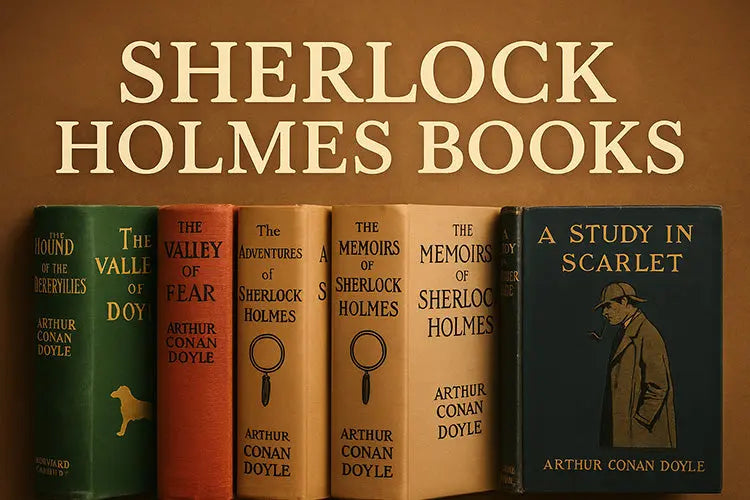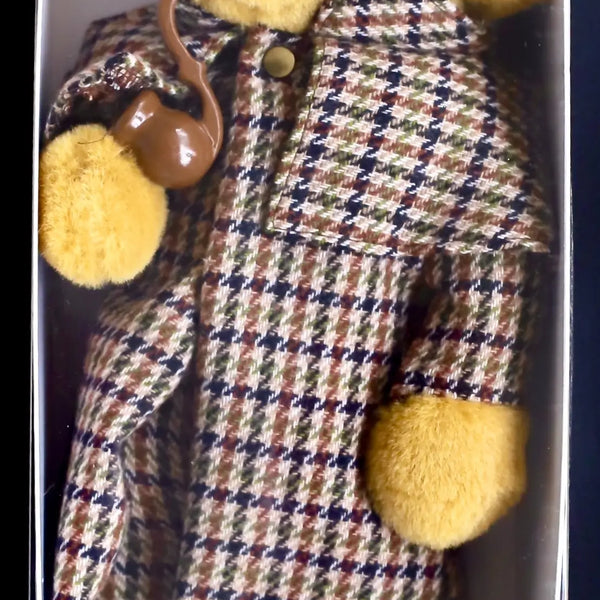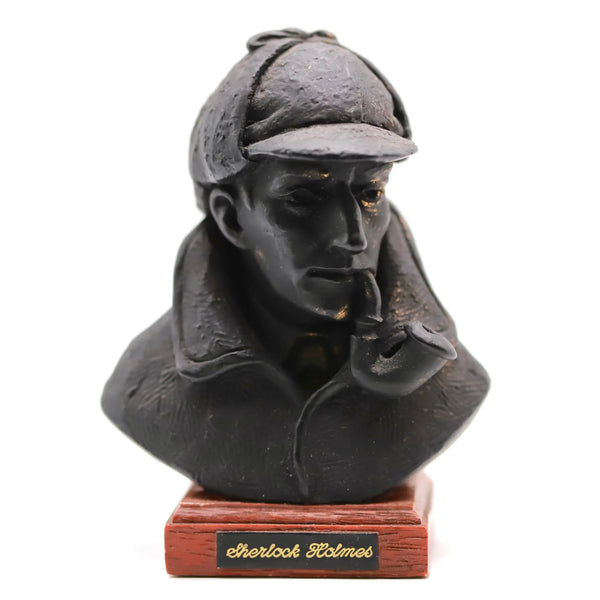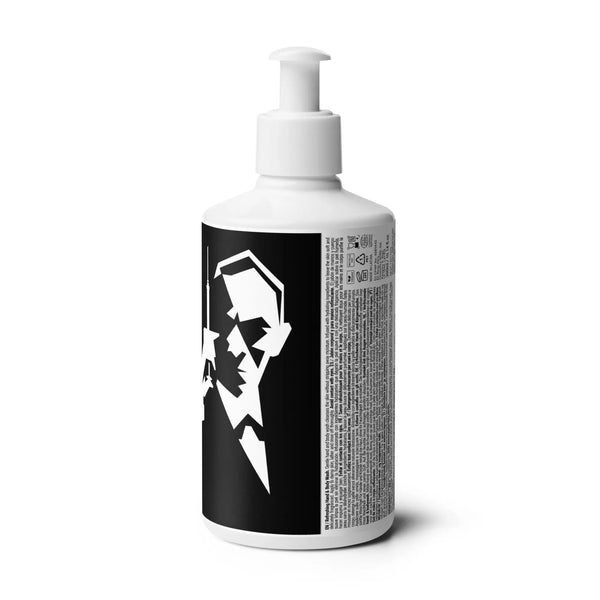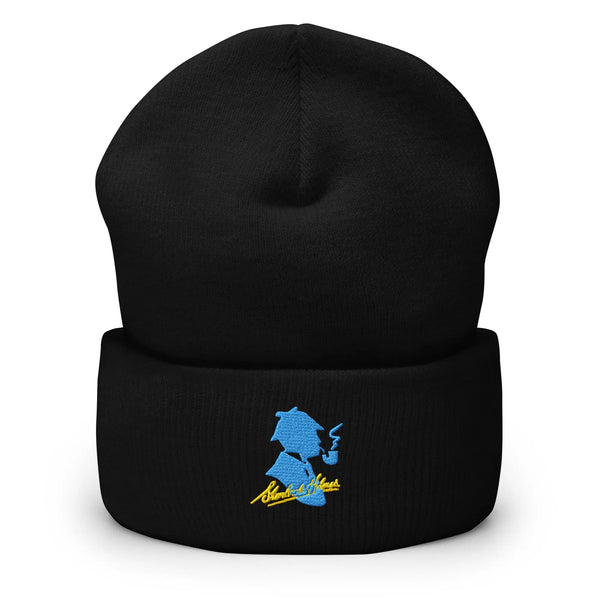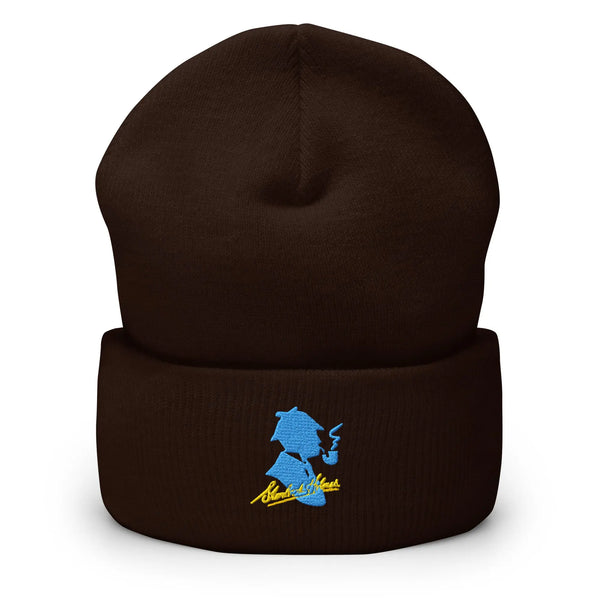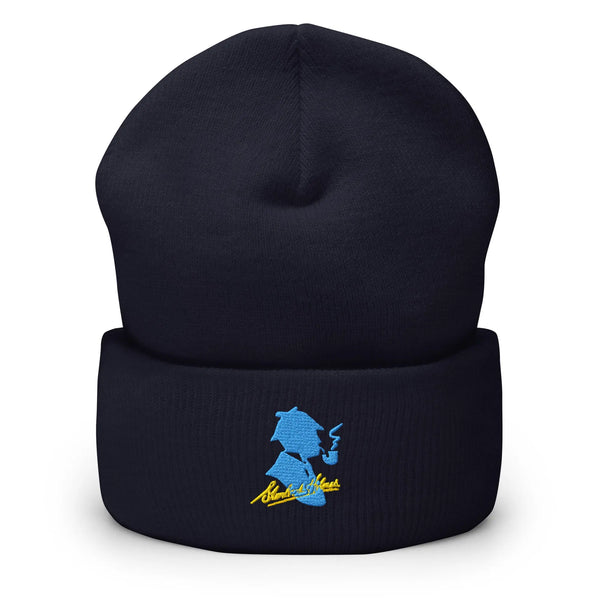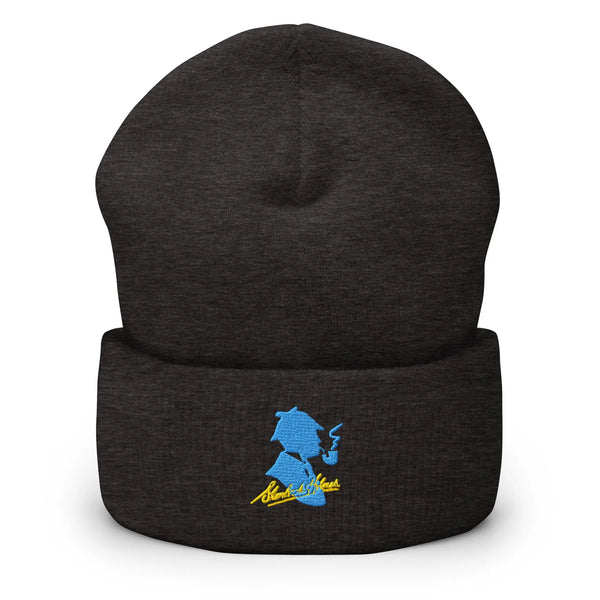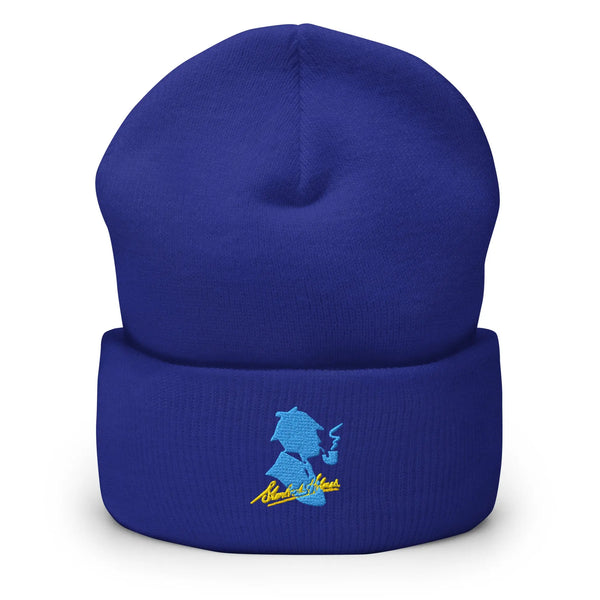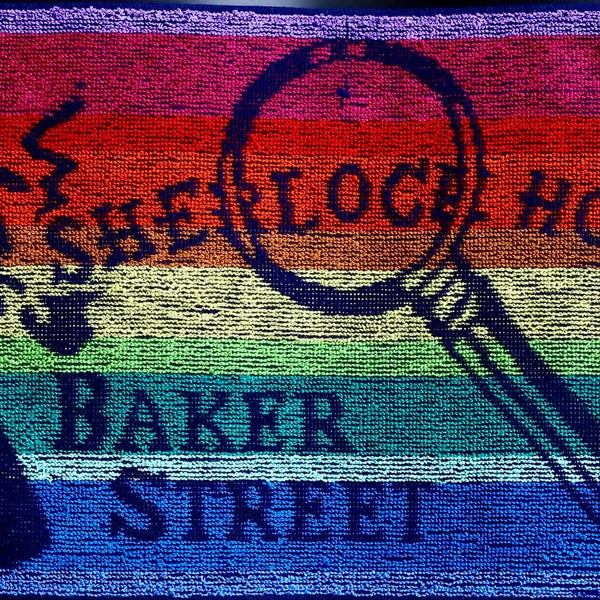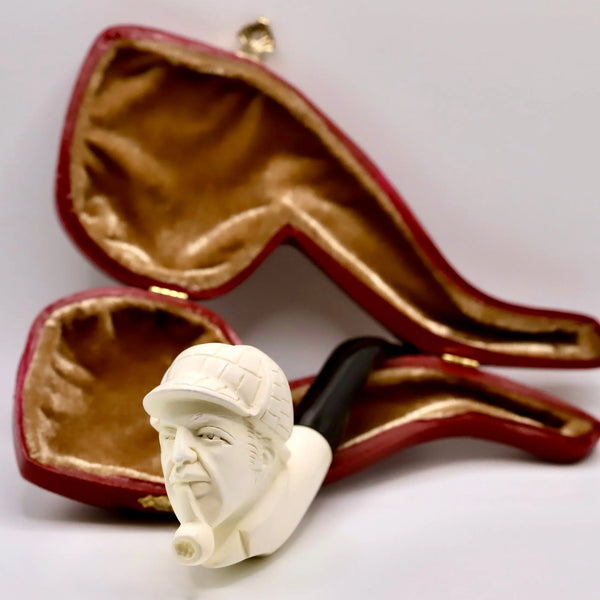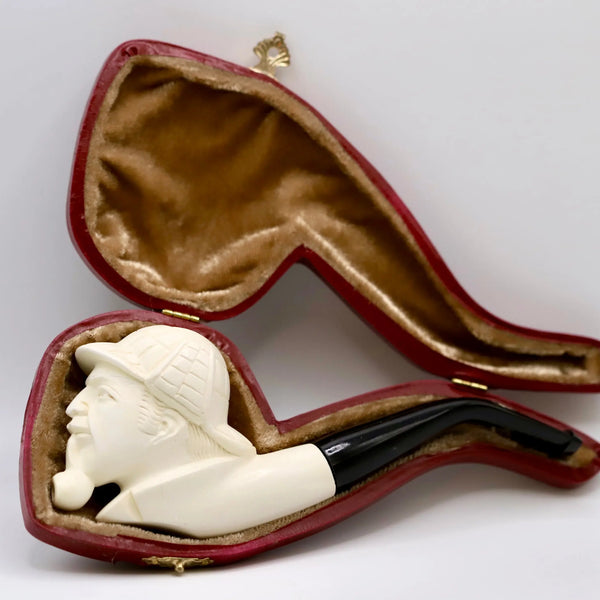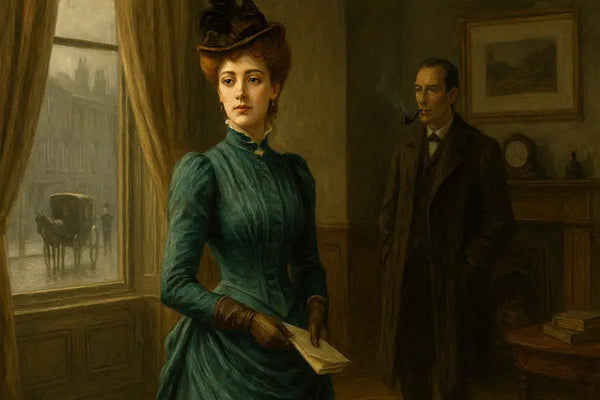Discover the full list of Sherlock Holmes books, including all novels and short story collections by Arthur Conan Doyle, in proper reading order and historical context.
Key Takeaways
-
There are 4 Sherlock Holmes novels and 56 short stories.
-
Written by Arthur Conan Doyle, the stories span from 1887 to 1927.
-
The best starting point is often the novel A Study in Scarlet.
The Four Sherlock Holmes Novels
The four novels in Conan Doyle's Sherlock Holmes series are foundational texts in detective fiction. Each novel expands Holmes’ character while offering deeply atmospheric mysteries. These four novels are a core part of the Sherlock Holmes canon.
1. A Study in Scarlet (1887)
The first story in the Sherlock Holmes series, "A Study in Scarlet," introduces the famous meeting between Holmes and Dr Watson. This first story is notable for being the first detective novel to depict the use of a magnifying glass as an investigative tool. It was published in Beeton’s Christmas Annual and sets the stage for Holmes’ detective style, including his pioneering use of forensic science to solve cases, and 221B Baker Street base.
2. The Sign of Four (1890)
The Sign of Four, the second novel, is where we meet Mary Morstan and see Holmes tackle a mystery rooted in colonial India. 'The Sign of Four' was first published in Lippincott's Monthly Magazine, a prominent literary publication known for featuring influential works. The book blends intrigue with emotional depth.
3. The Hound of the Baskervilles (1902)
Published after Holmes' supposed death, The Hound of the Baskervilles is a gothic mystery placing Holmes on the moors solving the legend of a phantom hound. It remains one of the most famous detective novels of all time.
4. The Valley of Fear (1915)
The Valley of Fear, Conan Doyle’s final Holmes novel, explores secret societies and features James Moriarty as a central figure in the plot, highlighting his role as Sherlock Holmes's arch-nemesis and criminal mastermind. It adds a darker layer to Holmes’ legacy.
The Short Story Collections
Doyle's Sherlock Holmes stories consist of 56 short stories, grouped into five collections, often published originally in Strand Magazine and illustrated by Sidney Paget. These tales solidified Holmes as a cultural icon and are among the most influential works in crime fiction.
Some of the most famous Sherlock Holmes stories include "The Greek Interpreter," "The Adventure of the Solitary Cyclist," "The Adventure of the Speckled Band," and "The Man with the Twisted Lip." While most stories are narrated by Dr. Watson, a few are told in the third person, offering a different perspective on Holmes's adventures. Each collection concludes with a last story, often marking a turning point or significant conclusion in Holmes's career.
-
The Adventures of Sherlock Holmes (1892)
-
The Memoirs of Sherlock Holmes (1894)
-
The Return of Sherlock Holmes (1905)
-
His Last Bow (1917)
-
The Case-Book of Sherlock Holmes (1927)
Notable Characters and Themes
Holmes and His World
From Baker Street to the foggy streets of London, the Holmes stories are inseparable from their setting. Sherlock Holmes remains one of the most influential figures in literature. Sherlock Holmes remains a global icon, with stories and mysteries that even reach as far as America.
The Art of Deduction
Central to the Holmes canon is logic and observation—the very art of deduction.
A Cast of Icons
In addition to Holmes and Watson, the canon includes memorable figures like Inspector Lestrade, Mycroft Holmes, Irene Adler, and the enigmatic Jeremy Brett, whose performance defined Holmes on screen.
The Legacy of Conan Doyle
After Conan Doyle’s passing, the Conan Doyle estate continued to manage his literary rights. Conan Doyle's death marked a turning point in the Holmes legacy, leading to speculation about lost works that some believe were written but never authenticated. Holmes entered the public domain in many countries, enabling adaptations like Enola Holmes and Sherlock Holmes games that let fans walk in the detective’s footsteps.
Some later Holmes stories are set during the First World War, involving Holmes in world war intelligence efforts for the British government. As Conan Doyle stated, he saw Holmes as a character who could adapt to changing times and new challenges, reflecting the evolving world around him.
Where to Begin?
If you’re wondering where to begin, start with The Adventures of Sherlock Holmes and read Arthur Conan Doyle's Sherlock Holmes books in chronological order. For the full experience, follow Holmes’ timeline from his first appearance to his final published adventure.
Final Thoughts
Whether you're exploring Holmes for the first time or revisiting the canon, the collection offers a brilliant mix of logic, mystery, and character. It's no surprise the detective still casts a long shadow over modern crime fiction.
FAQ
What is the correct order to read the Sherlock Holmes books?
Start with A Study in Scarlet and continue with the novels and short stories in order of publication for the most authentic experience.
How many Sherlock Holmes books did Arthur Conan Doyle write?
He wrote 4 novels and 56 short stories featuring Sherlock Holmes.
Who are the key characters in the Sherlock Holmes series?
Besides Holmes himself, important characters include Dr. Watson, Inspector Lestrade, Mycroft Holmes, Irene Adler, and Professor Moriarty.
What is the best Sherlock Holmes book to start with?
Most readers begin with The Adventures of Sherlock Holmes or A Study in Scarlet.
Which book features the Reichenbach Falls?
"The Final Problem," a short story in The Memoirs of Sherlock Holmes, depicts Holmes' dramatic encounter with Moriarty at the Reichenbach Falls.
Is The Valley of Fear the last Sherlock Holmes novel?
Yes, it’s the fourth and final novel, published in 1915 and set before Holmes’ retirement.
Are the Sherlock Holmes books public domain?
Most original stories are now in the public domain, allowing modern adaptations and reinterpretations.
What inspired Arthur Conan Doyle to create Sherlock Holmes?
Conan Doyle based Holmes on Dr. Joseph Bell, a physician known for his keen observational skills.
